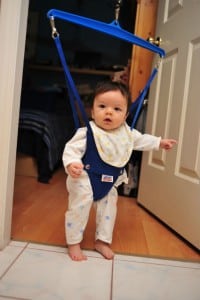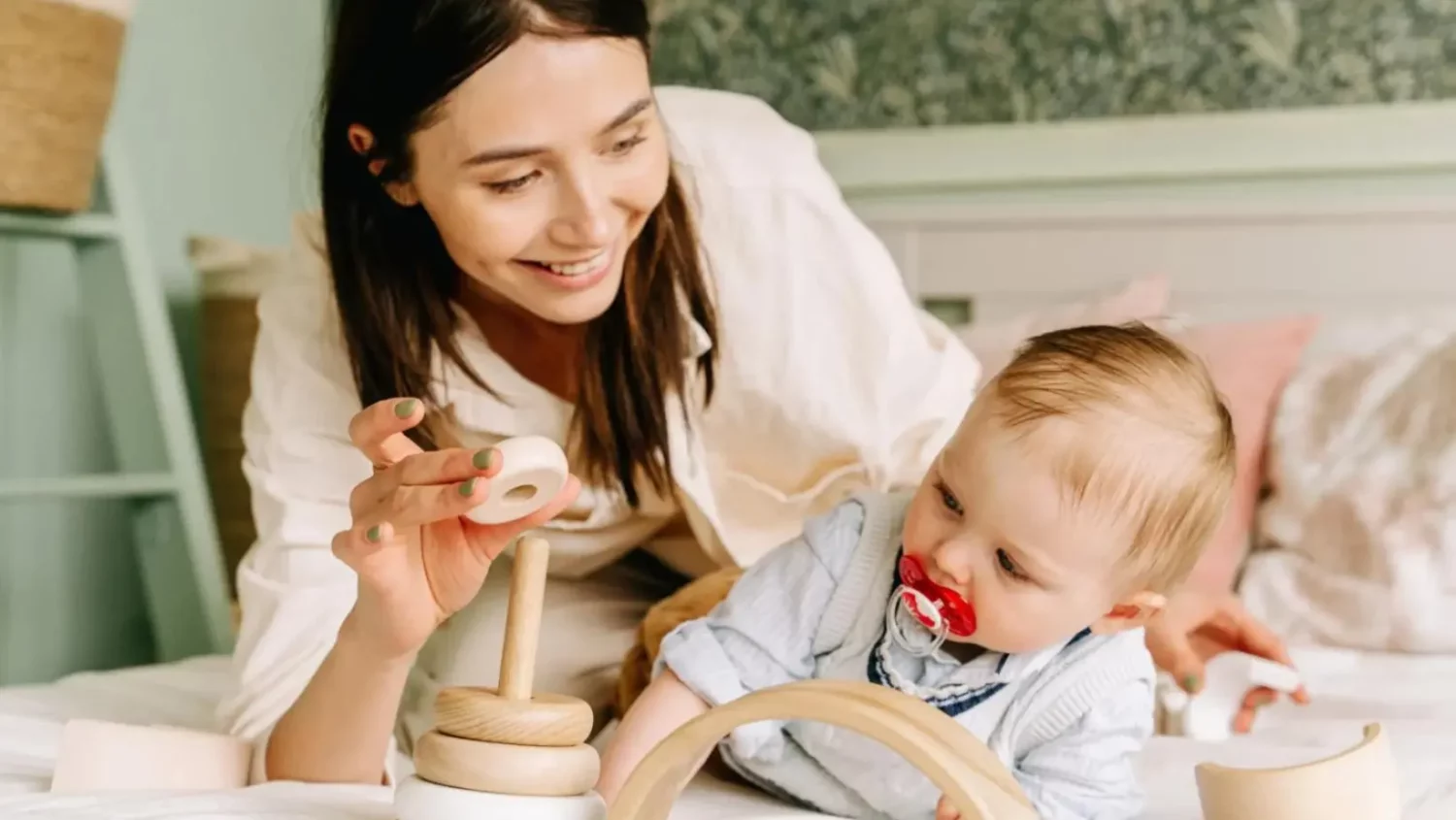While affective and emotional development is discreet during the first year, it is a crucial stage for their social and affective skills.
When monitoring a baby’s growth and development after birth, the health care provider takes into account the whole child, including gross and fine motor skills, language, social skills and cognitive skills (problem-solving), always according to the child’s age and history.
In this article, I will talk more about baby motor development from birth to one year of age.
A Child’s Development Pace
Each child has their own developmental pace and abilities. Motor development for children born prematurely or with health problems will be modulated based on their condition. The parent is there to work with and stimulate the child over the different development stages to promote the optimal development of their abilities. In this case, stimulating means “encouraging” your child. You want them to add these activities to their daily routines over time.
On the back, stomach and side!
Since the Public Health Expertise And Reference Centre and the Canadian Pediatric Society developed directives concerning babies sleeping on their backs, many parents wrongly think that they need to lay their baby on their back all the time. This is a significant impediment to their motor development.
A baby needs to be placed regularly on their stomach. This is essential for them to develop their sensorial and motor exploration skills. Each day, the baby should be placed on their stomach 10-15 times. They will learn to raise their head, put weight on their hands, raise their bottom, creep, crawl on all fours, then stand up and walk. The diaper change is a great time to do this repeatedly.
Always laying on their back can lead to a delay in their motor skill performances needed to move around. Under supervision, you can place your baby on their stomach and alternate between their two sides to promote a variation of sleep positions over 24 hours.
Skin-to-skin with a new baby also helps promote the stomach position laying on their parent, while also preventing newborn plagiocephaly (flat head).
 A baby will often naturally try to do things that seem easier for them to minimise their efforts to reach their goal. That is why some babies are called lazier or more passive. They will need more stimulation and encouragement to get them to do things in different ways.
A baby will often naturally try to do things that seem easier for them to minimise their efforts to reach their goal. That is why some babies are called lazier or more passive. They will need more stimulation and encouragement to get them to do things in different ways.
Even if child development is a dynamic and individual process, sometimes, as a parent, you need to push them to learn particular things. When a health professional evaluates a baby’s development, they look at the whole situation before making their clinical evaluation and diagnosis.
The two first years in a child’s life are crucial for their sensorial and motor development (senses and activities). This period is when children build the foundation that will serve them for the rest of their life. It is a sensitive period that requires optimal stimulation, not too much or too little. When their environment is stimulating and encourages learning, the baby will become lively and self-confident. As a parent, you shouldn’t try to accelerate the developmental process by overstimulating your child. It is not always positive that a baby seems ahead of the developmental curve. Skipping over some stages can harm rather than help over the short, medium and long term.
The Foundations of a Baby’s Physical Development
The foundations of a baby’s physical development are deep. Baby’s develop from head to their feet and from torso to their limbs. That is why your baby will learn to support their head, raise themselves to sit before standing up and walking. They will also develop their first arm movements before developing fine motor skills in their fingers to pinch.
A baby is a sponge when faced with the stimuli surrounding it. We know that a baby’s brain contains 100 times more free neurologic cells than an adult.
Based on current knowledge, baby development is sequential, predictable and cumulative. This means that the baby must acquire specific skills before being able to learn others. Step-by-step.
Play
Play is the ideal choice for babies and children to learn. Babies like new things are attracted to different objects and enjoy learning. When the baby is small, you need to be aware of the periods they are awake and available to learn. You have to find the right time so that playing is fun for both baby and parent. Over time, the baby will be awake for more extended periods and will have more time and availability to play with parents.
The best place to play and stimulate a baby is on the ground. The ground is the best playground possible. Just make sure they are safe when playing. You don’t need accessories or special equipment to help them develop. Everything you need is already in the home.
A baby’s five senses (smell, sight, touch, hearing and taste) are stimulated when breastfed by their mother. It’s a complete activity for a baby in full cerebral development.
Boys and girls learn differently but reach the same point in different ways. Often we hear that baby boys develop their motor skills faster, and others will say that girls will talk earlier. Don’t forget that every child (boy and girl) has their own development pace. That is why we talk about average ages for learning things and talking, to respect each child’s pace.
Freedom of Movement
Freedom of movement is a concept that appeared in Hungary in the 1960s. Dr. Pikler, a pediatrician, promoted leaving the baby to learn and move at their own pace, providing them with a safe and adapted environment that will encourage and stimulate their developmental abilities. Parents that follow this approach limit the help they give to the baby, but provide them with a proper environment and games that will get babies to make efforts and complete new activities at their own pace on their own.
Freedom of movement does not mean leaving the baby alone and waiting for them to learn new things without supervision. It is offering them a proper environment and making sure that they acquire different skills in their own way based on their age.
The Use of Baby Accessories
 You have to be careful when using baby accessories. Health professionals that specialise in child development will tell you to avoid items that limit their freedom of movement, which can interfere with their muscle development by forcing them into poor postures. These items can include Jolly Jumpers, Bumbos, saucers, baby carriers for the car, vibrating chairs, swings, etc.
You have to be careful when using baby accessories. Health professionals that specialise in child development will tell you to avoid items that limit their freedom of movement, which can interfere with their muscle development by forcing them into poor postures. These items can include Jolly Jumpers, Bumbos, saucers, baby carriers for the car, vibrating chairs, swings, etc.
Don’t feel guilty if you use them from time to time, but limit their use as much as possible to when the ground is not an option.
Concerning Jolly Jumpers, Bumbos and saucers, you should never use them for babies under six months who can hold up their head and upper body. There are no benefits for their development. If you do use them, never for more than 10-12 minutes at a time.
Infant Motor Development (0-12 months)
To explain baby development during their first year, I grouped my explanations into trimesters – 0-3 months, 4-6 months, 7-9 months and 10-12 months. I also suggest activities you can do as parents to help their learning process.
The developmental files prepared by physiotherapists with the Institut de réadaptation de Québec (IRDPQ) are also available in the articles depending on their age.
To start, please read the article Baby Motor Development From 0-3 Months and 4-6 Months.
Marie Fortier
The Baby Expert


